In the 14 years or so that I worked in the Emergency Department, I ordered literally thousands of X-rays. X-rays have a wide range of applications varying from the diagnosis of simple bone fractures, through to the investigation of complex heart conditions and the diagnosis and staging of cancer. Every year, in the U.K. alone, well over 40 million imaging and radiodiagnostic tests are carried out, and this figure is growing by about 3.5% per year. As a clinician, I took these incredibly useful tests for granted, but if it wasn’t for a chance finding in 1895 by a scientist named Wilhelm Röntgen, things might be very different.
Who was Wilhelm Röntgen?
Wilhelm Röntgen was born to a German father and a Dutch mother in Lennep, Prussia, on 27th March 1845. At the age of three, his family moved to Apeldoorn in the Netherlands, and it was here that he would spend his formative years and attend school. Röntgen was not a particularly gifted student but was noted as having an aptitude for building mechanical devices from an early age.
In 1863, he was unfairly expelled from the high school that he attended at the time when he was accused of producing a caricature of a teacher that was made by another student. Without a high school diploma, Röntgen was unable to attend University. Undeterred, he enrolled to study Physics at the Polytechnic Institute in Zurich in 1865 instead, by passing its examination. This was the same school that Einstein would attend and graduate from in 1900. He would later go on to attend the University of Zurich as a PhD student, graduating in 1869.
In 1874, Röntgen became a lecturer at the University of Strasbourg, and in 1876 he became a Professor of Physics there. Three years later, in 1879 he was appointed to the position of the Physics Chair at the University of Giessen, and then in 1888, he was appointed as the Physics Chair at the University of Würzburg. It was here that he would make the extraordinary discovery of a new form of radiation.
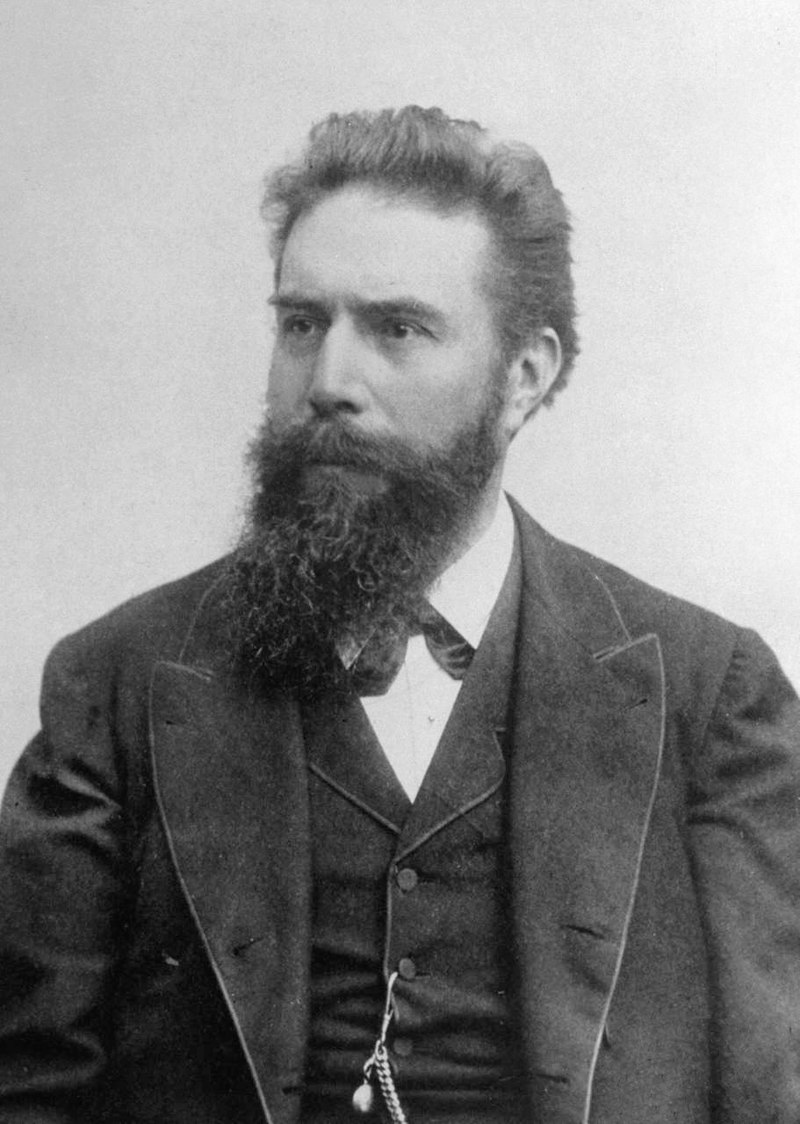
A photo of Wilhelm Röntgen taken circa. 1900
The discovery of X-rays
The precise details of the discovery of X-rays are not known for certain, and there are conflicting reports as to the exact details of the discovery because Röntgen had all of his lab notes burned after his death. The following is a likely reconstruction of the day from the details provided by those who knew and worked with him though.
On 8th November, Röntgen was conducting experiments using a cathode ray tube in his laboratory. Cathode ray tubes are specialised vacuum tubes that give off fluorescent light when a high electrical voltage is passed through it. Röntgen noticed by accident that the beam emitted from the tube turned a screen that was situated 9 feet away a greenish fluorescent colour, even though the tube was shielded by heavy black paper.
Röntgen carried out some further experiments and quickly realised that he was dealing with a new, previously undiscovered ray. He referred to this radiation as “X” because of its unknown nature. The name stuck to this day, although many of his colleagues referred to them as Röntgen rays and some still use this name. A week after his discovery, Röntgen took an ‘X-ray photograph’ of his wife Bertha’s hand. This iconic image clearly showed the bones of her hands and her wedding ring and stimulated considerable interest in the scientific community.
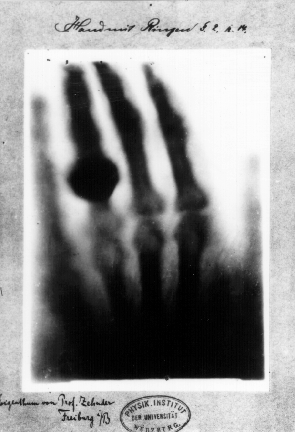
The famous ‘X-ray photograph’ taken of Röntgen taken of his wife’s hand on 22nd November 1895 (Hand mit Ringen).
The medical applications of X-rays
Röntgen quickly realised that these ‘X-rays’ could have medical applications and he sent an open letter to physicians he knew around Europe. A few weeks later on January 11th, 1896 X-rays were used for the first time under clinical conditions when John Hall-Edwards radiographed a needle that was stuck in the hand of an associate. The following month Hall-Edwards used X-rays during a surgical operation.
Scientists rapidly realised that there were numerous medical applications for this miracle ray and their use quickly spread. Sadly, they were much slower to comprehend the potential risks, thinking initially that they were just harmless rays. Within a few years reports of complications started to appear and cases of skin damage and burns were reported. In 1904, Clarence Dally, a scientist that had worked extensively with X-rays died from skin cancer, causing scientists to start to investigate the risks of X-rays and take them more seriously. These risks weren’t fully appreciated until the 1950s, though, and a significant number of people suffered harm as a consequence of their use in the early years.
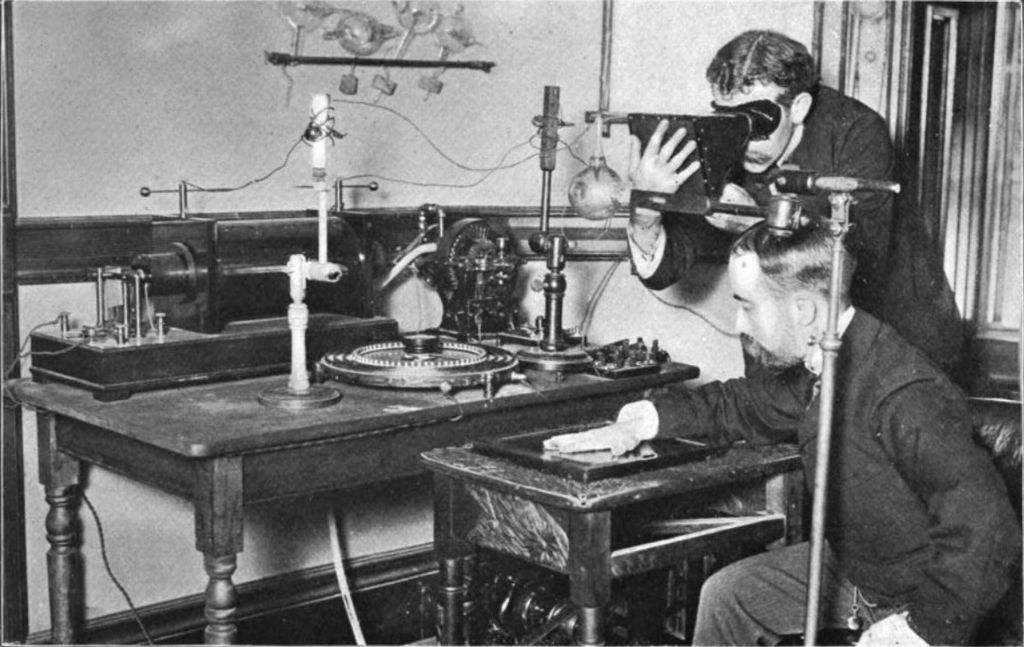
An X-ray being taken circa. 1896. The protective precautions taken today are conspicuously absent.
The first Nobel Prize in Physics
In 1901, Röntgen was awarded the first Nobel Prize in Physics “in recognition of the extraordinary services he has rendered by the discovery of the remarkable rays subsequently named after him.” Every year on 8th November the scientific community remembers Röntgen with World Radiology Day: The International Day of Radiology.

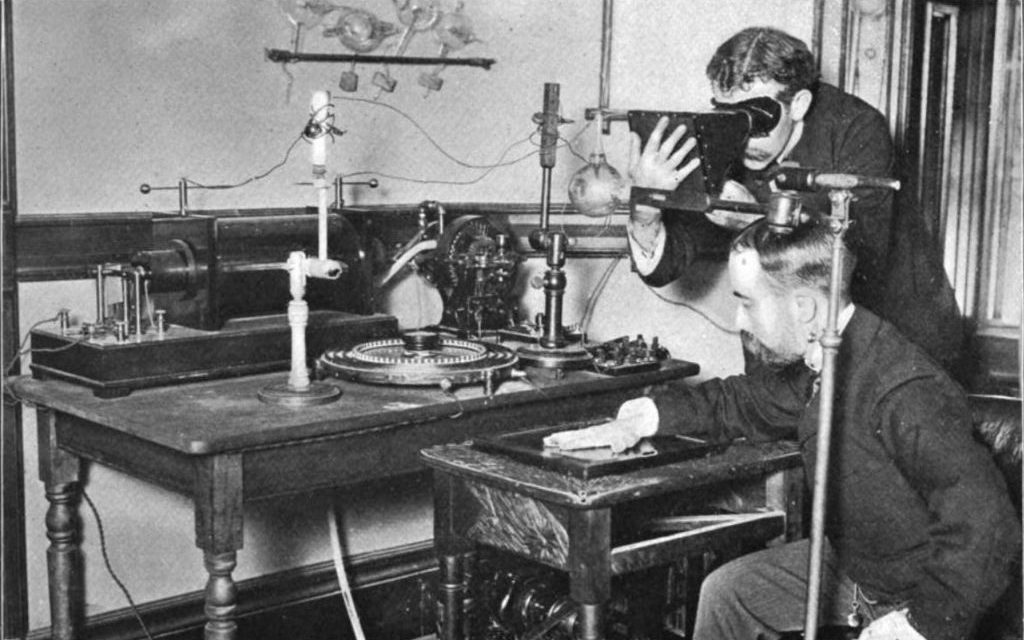

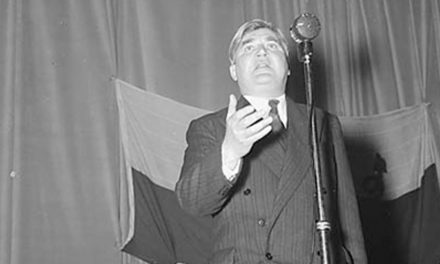

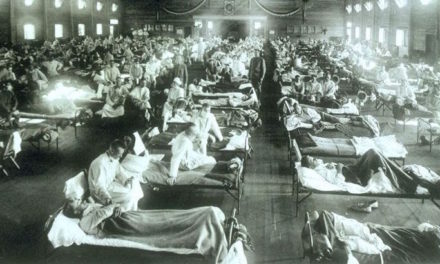

Recent Comments